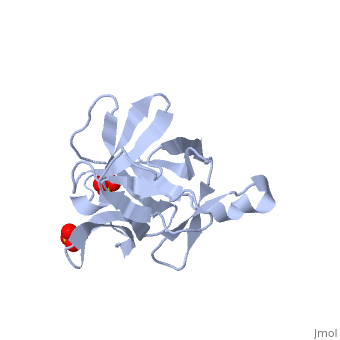2nvh
|
Determination of Solvent Content in Cavities in Interleukin-1 Using Experimentally-Phased Electron Density
OverviewOverview
The extent to which water is present within apolar cavities in proteins, remains unclear. In the case of interleukin-1beta (IL-1beta), four, independent structures solved by x-ray crystallography indicate that water, is not present in the central apolar cavity. In contrast, results from NMR, spectroscopy suggest that water has high occupancy within the cavity but, is positionally disordered, making it undetectable by standard, crystallographic methods. A theoretically based crystallographic-phase, refinement technique also suggested that there was the equivalent of two, fully occupied water molecules within the apolar cavity. To resolve these, discrepancies we sought to obtain an experimentally phased electron, density map that was free of possible bias caused by mathematical modeling, of the protein or the solvent. By combining native diffraction data with, multiple wavelength anomalous data from a platinum derivative, accurate, phases were obtained. Using these experimental phases, we estimate that, occupancy of the apolar cavity in IL-1beta by solvent is close or equal to, zero. Polar cavities in the protein that contain ordered solvent molecules, serve as internal controls.
DiseaseDisease
Known disease associated with this structure: Gastric cancer risk after H. pylori infection OMIM:[147720]
About this StructureAbout this Structure
2NVH is a Single protein structure of sequence from Homo sapiens with SO4 as ligand. Full crystallographic information is available from OCA.
ReferenceReference
Determination of solvent content in cavities in IL-1beta using experimentally phased electron density., Quillin ML, Wingfield PT, Matthews BW, Proc Natl Acad Sci U S A. 2006 Dec 26;103(52):19749-53. Epub 2006 Dec 18. PMID:17179045
Page seeded by OCA on Mon Nov 12 23:03:03 2007
